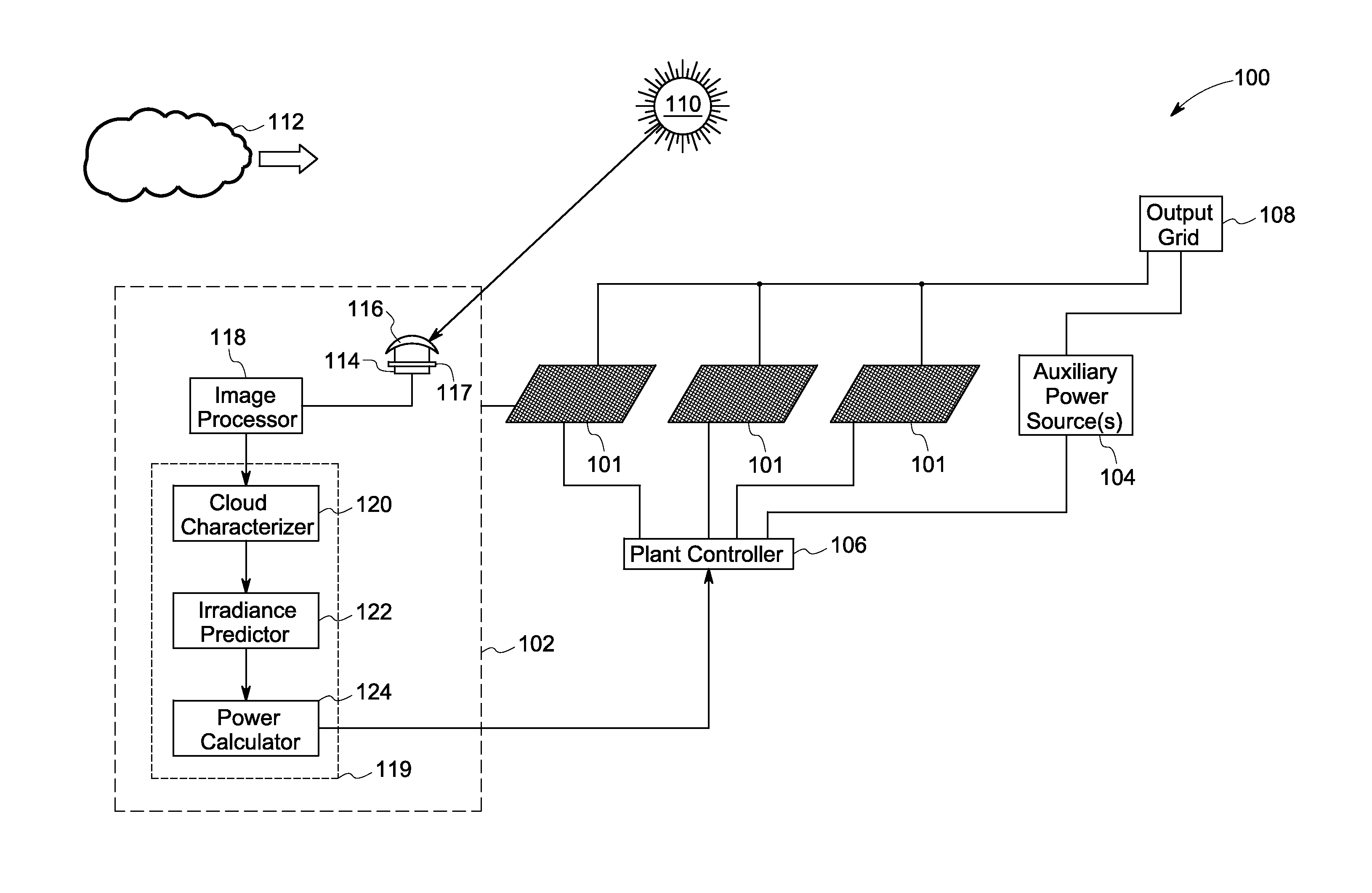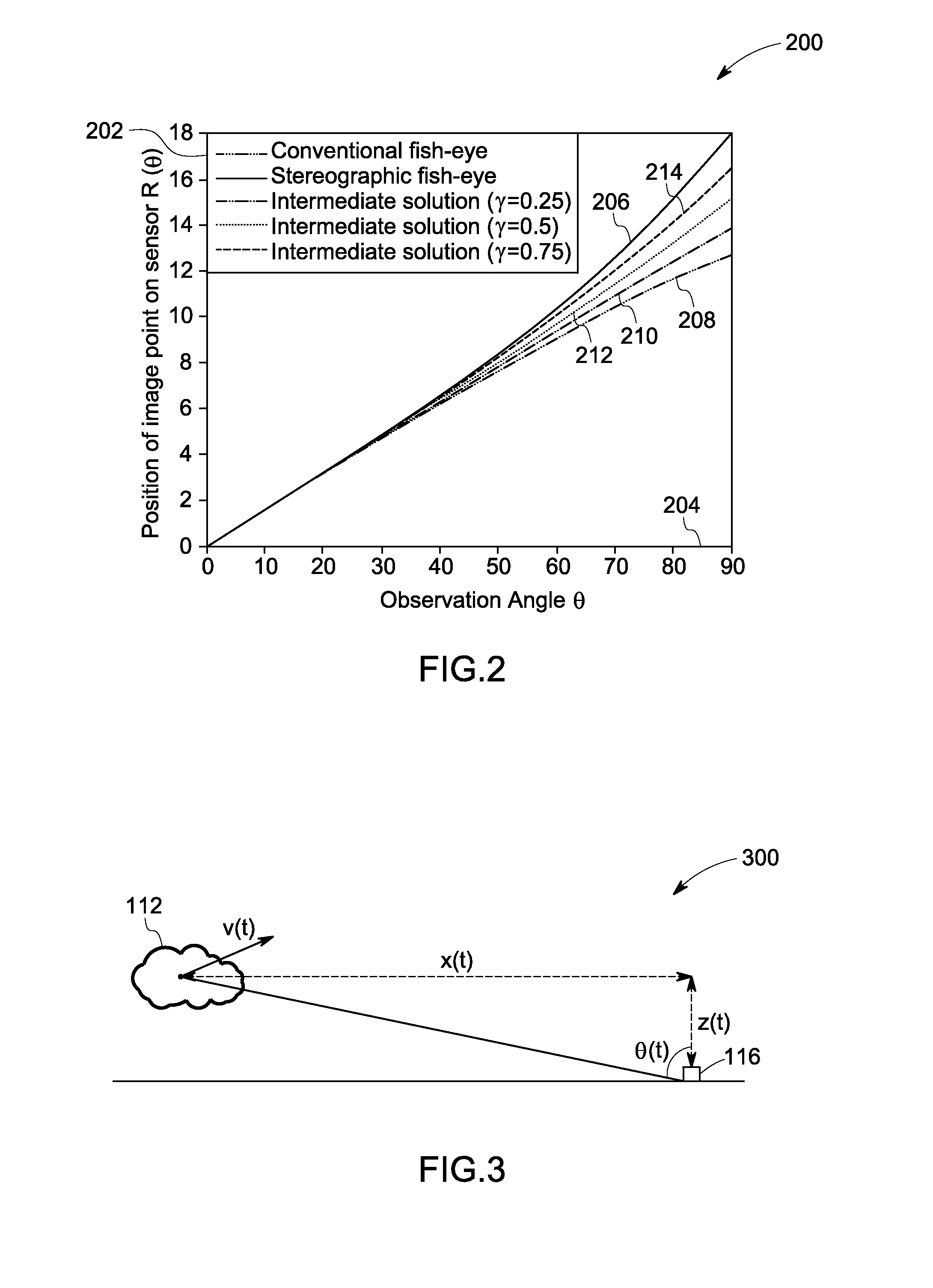Methods and Systems for Predicting Cloud Movement
a cloud and cloud technology, applied in the field of solar energy, can solve the problems of limited power output of solar panels, difficult to predict cloud movement, and inability to detect distant low clouds
- Summary
- Abstract
- Description
- Claims
- Application Information
AI Technical Summary
Benefits of technology
Problems solved by technology
Method used
Image
Examples
Embodiment Construction
[0015]Embodiments of the present disclosure are related to systems and methods for predicting / estimating cloud movement using optimized optics. It will be noted that throughout this disclosure the terms ‘predict’ and ‘estimate’ have been interchangeably used. Further, as used herein, the term ‘irradiance’ refers to the density of solar terrestrial radiation incident on a given surface. The irradiance is typically expressed in watts per square centimeter or square meter.
[0016]Moreover, embodiments of the present disclosure are described with respect to predicting solar irradiance for a solar plant in case of occlusion events. The term ‘occlusion event’, as used herein, refers to events or duration of time for which a cloud cover shades one or more solar panels in the solar plant. It will be understood that the systems and methods to predict cloud movement described herein may be utilized in other applications as well. For example, these systems may be utilized in meteorological cente...
PUM
 Login to View More
Login to View More Abstract
Description
Claims
Application Information
 Login to View More
Login to View More - R&D
- Intellectual Property
- Life Sciences
- Materials
- Tech Scout
- Unparalleled Data Quality
- Higher Quality Content
- 60% Fewer Hallucinations
Browse by: Latest US Patents, China's latest patents, Technical Efficacy Thesaurus, Application Domain, Technology Topic, Popular Technical Reports.
© 2025 PatSnap. All rights reserved.Legal|Privacy policy|Modern Slavery Act Transparency Statement|Sitemap|About US| Contact US: help@patsnap.com



